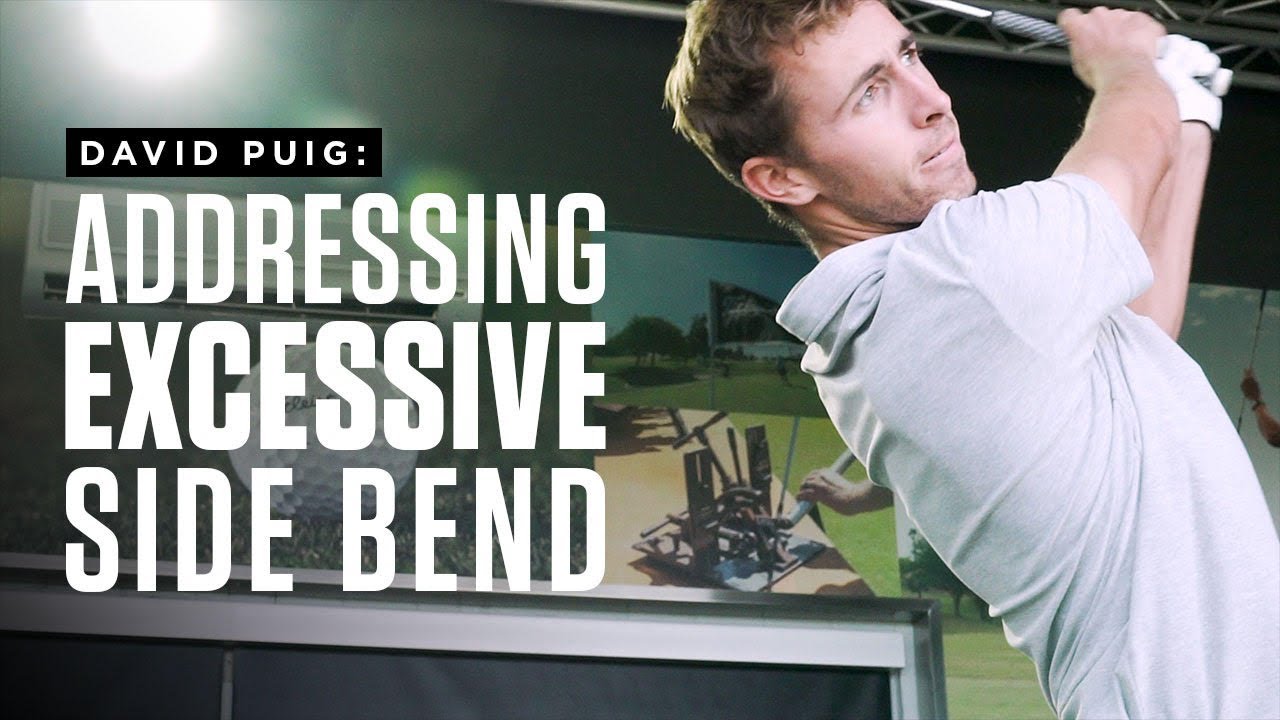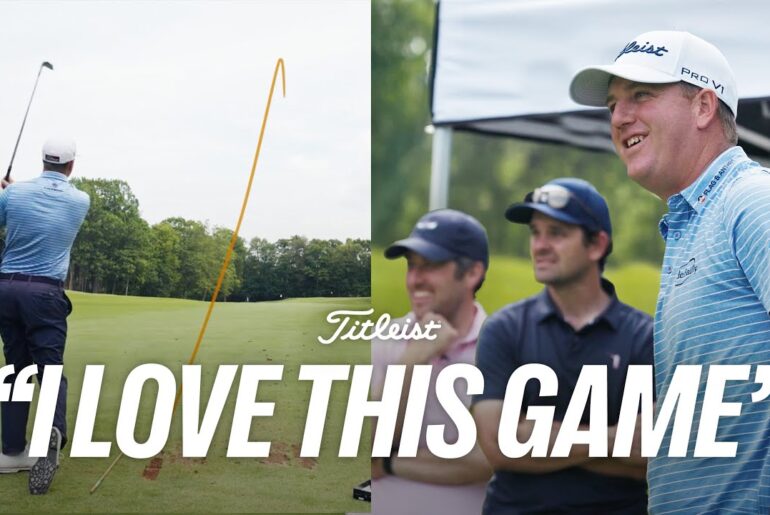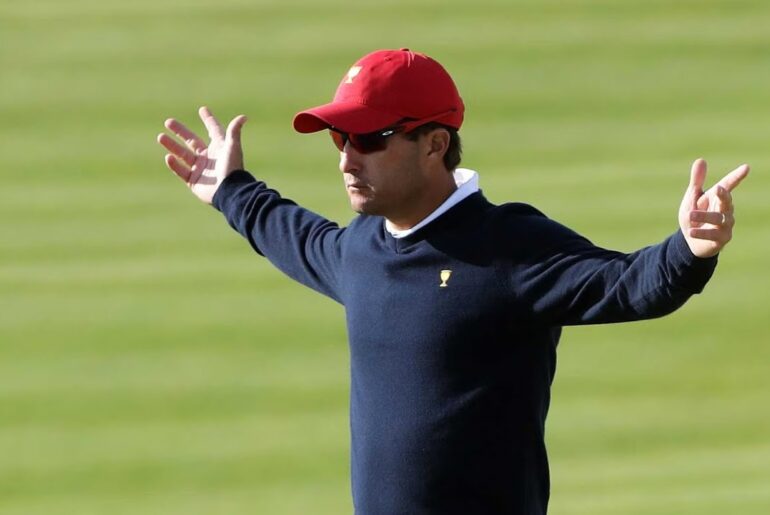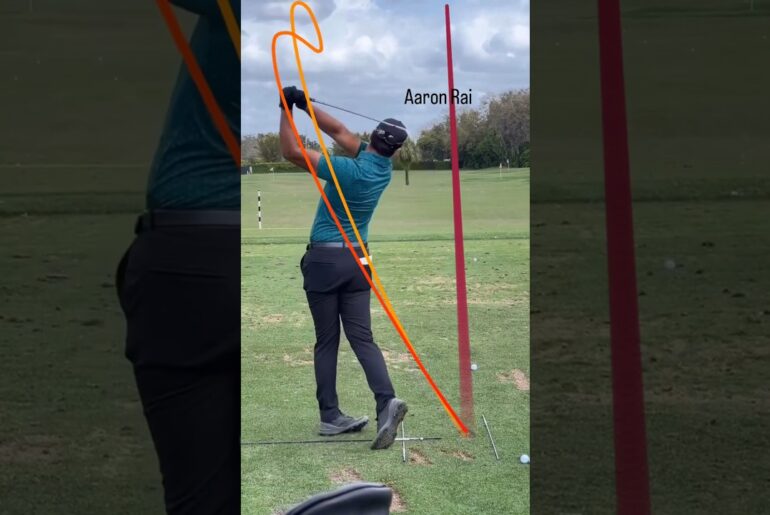At just 22 years old, David Puig is one of the most talented young golfers in the world, but when we met him two years ago, he was already complaining of lower back pain.
Though pain is multifactorial, we always want to investigate if mechanics or movement capabilities could be contributing factors. In David’s case, his movement screen matched his 3D data, suggesting that his body may be an underlying driver of inefficient technique. We call this a Body-Swing Connection.
This video details how David was compensating for lack of mobility in his thoracic spine and lats by excessively side bending at the top of his golf swing, a position that is likely to create additional stress on his lower back.
hey everyone I want to take a deep dive into one of the best young players in the game today David pu and I want to talk about his golf swing because he’s one of those young phenoms that uh is starting to develop a little bit of back pain and he had a classic body swing connection that I want to kind of highlight typically if you think about you think about the golf swing if you’re the brain and you’re going to take a swing you’re going to want to try and move as much as you can through your mobile joints and if you remember your mble joints we’re going to try and rotate through the hip we’re going to try and rotate through the upper spine the thoracic spine we’re going to try and get range motion through the shoulders and the wrists those are your joints that really you should be doing most of your motion from that allows you to stay stable through some of your airs like your lower back but if you have Mobility problems let’s say you can’t turn the thoracic spine right or you can’t Elevate the arms the body starts to look for other ways to get motion and the most common thing here is with golfers is if they can’t turn either through the hip or the spine or lift the shoulders they’ll get to their wall instead of continuing to rotate they they do what I call a fake Turn they’ll either Bend backwards into what we call the reverse spine angle position and hyperextend their back which creates all kinds of back problems or they’ll hit their wall and they’ll excessively Bend to the left which also creates reverse SP angle and puts stress on their lower back so Dave to keep beating a dead horse here if it’s tighter turning right and harder lifting your leg up it’s way easier to just rock two really easy compensations for most players to make is hyperextend from the lower back or side Bend left now d if you look at his physical screen it was very clear it was hard for him to rotate his chest to the right thorax rotation to the right and it’s hard for him to elevate his arms so when he gets to a certain point in his swing he’s learned that hey if I keep turning it’s not going to go anywhere if I try and lift it’s not going to go anywhere so what he did is he went to excessive side Bend is look look at the reverse spine angle it’s not there you know why it’s left side Bend really yes he gets there by doing that if you look at the 3D I’ve got him here at the top of his back swing normally at the top of the back swing we see around 36° of left side bend the shoulders 30 the left shoulder is 36° below the right shoulder he’s about 10° more he gets about 45° now that doesn’t seem like a big deal it’s only 10° 45 right but you got to remember to get to impact I know have to go the complete opposite direction I got to go to right side Bend and the amount of time is the same so he’s got to move farther in the same amount of time and it puts an excessive stress on that lower back during the down swing and if I take him down into his impact position coming through impact he matched it he’s at 45 de again again most players are around 35 and 35 he’s adding 10° more of side Bend through impact and because he started with more side Bend he’s actually moving faster so I’ve got more speed more side bin it’s a recipe for lower back problems the only reason we’re doing this is to try and long-term take stress off your body it’s not that you’re playing bad or hitting it bad so if I look at his Force plate and again I mean we’re talking some of the best ground reaction forces we’ve seen in golf here he’s got a perfect sequence right he he basically takes the club to the top of the back swing and as he starts what we want to see is we want to see a lateral weight sh first which he does about 14% of his body weight then next thing he does is what we call frontal plane torque or Rock so he goes lateral then he rocks that’s called frontal plane torque then he starts to twist and then he jumps leral Rock twist jump now everything’s in sequence vertical Force looks great the rocking and twisting look great but if I look at the lateral the how he starts his swing he goes at 14% of his body weight average is almost double that on the PGA tour so what does that mean well he’s still he’s again he’s an incredible player he’s creating all this power but he’s doing it differently so what he does is this he gets to the point where he can’t turn anymore hard to lift his arm so he bends sideways and he goes left right so he goes left early now it’s it’s kind of hard to go left when you’re already left right so what he does is he from here he just he really turns and there’s not really an aggressive weight shift now what is really weird about this is it reduces his lateral ground reaction force he still gets away with it again incredible Talent these players learn how to get around these problems so what it does is two things number one we already talked about put stress on the lower back and something that we want to try and minimize and reduce because we want to be able to play this game for 40 more years we’re trying to go okay could we work towards a swing that’s taking stress away and number two is he’s actually reducing his lateral weight shift now lateral weight shift could actually increase his torqux it could increases ground reaction forces it can increase the moment arm which actually increases the torque to make a long story short he can hit the ball further your lead shoulder needs to be more like a Nike SW and it’s just going down so instead of this I’m doing correct yeah 100% that was you went from 42 to 35 so he could do it actually less pain and more power if we work on these so one of the things that we’re trying to work on and he’s done incredible give them the range of motion so that they can turn give them the range of motion they can raise their arms and that way he doesn’t have to do a fake Turn he can actually turn and you’ll start to see all these numbers improve and hopefully the players play without pain








5 Comments
Excellent
Was he hitting down with loads of spin on driver?
Great vid. Hoping we get a deep dive on Will Zs swing changes!
30 year old going through my first back injury. Stuff like this is gold.
Do you have the full video inc mobility tests etc?